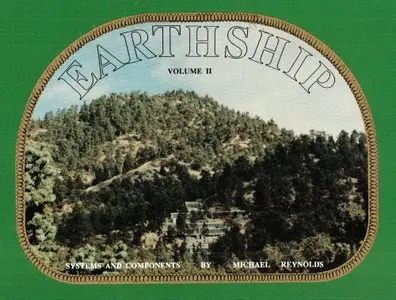Earthship, Vol. 2: Systems and Components By Michael Reynolds
1991 | 254 Pages | ISBN: 0962676713 | PDF | 294 MB
1991 | 254 Pages | ISBN: 0962676713 | PDF | 294 MB
Michael Reynolds definately walks the walk. I first heard of Earthships several years ago, but didn't give it much thought until, driving just beyond the Rio Grande Gorge outside of Taos, I saw a collection of them. To say I was impressed would be an understatement. What Michael has done, first publicized to my knowledge in this book, has been astonishing. The book talks about his concept of the Earthship, how to build them, how they work, and how you, too can live virtually independant of the large grid of services available to you, and that in many ways makes you work for the system itself! This book of ideas has evolved and been thoroughly vetted in real life in 3 developments around Taos and countless other places in the world (mostly in the Western US) -- so it is a lot less experimental than you might think. The novelty mostly resides with our unfamiliarity with the Earthship. The structures are partially buried, with load bearing walls made of earth rammed old tyres, non load bearing walls built of cans, with greywater systems supported by rain catchwater. PV and wind powered, with food and other plants grown in the house, the premise is as close to total self sufficiency as one might be able to get. Philosophically, nearly a perfect expression of that desire. Practically, it seems to deliver, which sets itself apart from many other building methods and philosophies. In this age of unreliable utilities, uncertain prices of fuels, corrupt business leaders, bankrupt corporations and politics bought and paid for by institutions whose motives are quentionable, such a book and underlying philosphy seems relevant like no other time similar except the early 1970's. To some, this book of building a low cost shelter might help someone get into a nice house where they might not have otherwise, to others this might be a manifesto, still others might have the engineering appeal strike the most resonant cord. Either way, this is a MUST HAVE for at least my bookshelf. I went ahead and got #2 and #3 as well!



